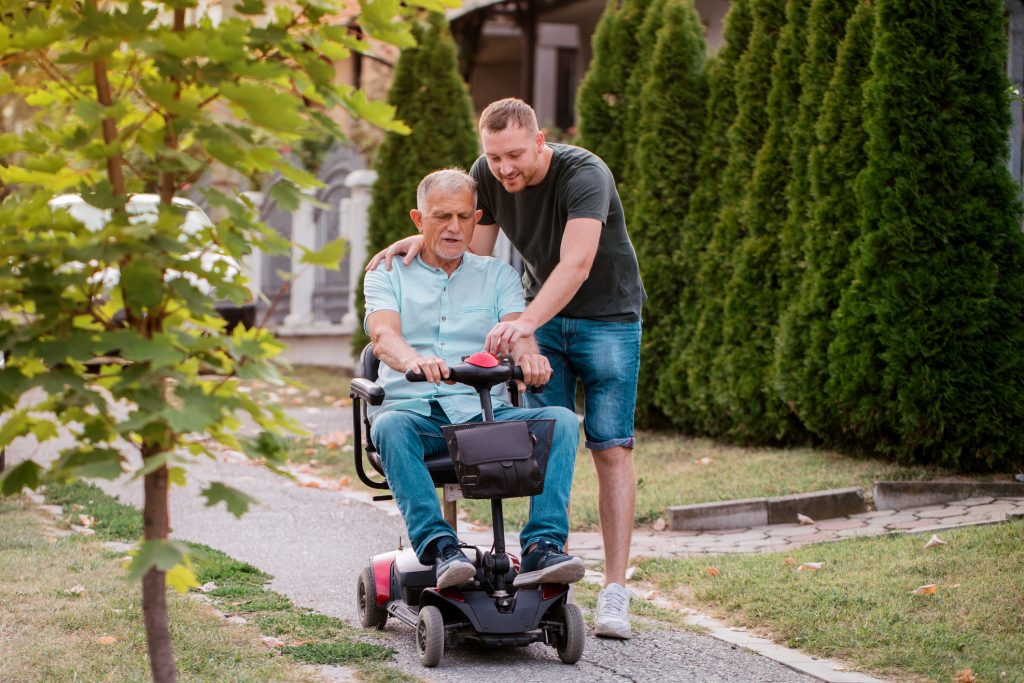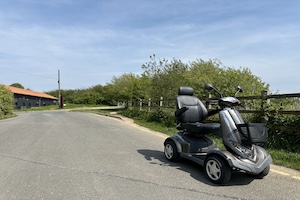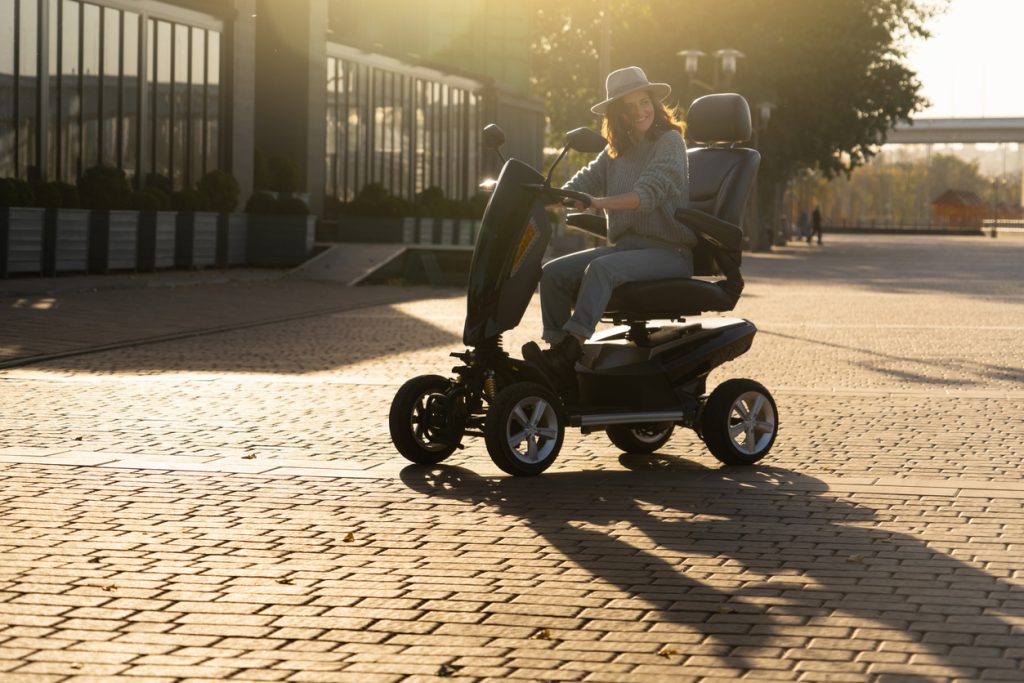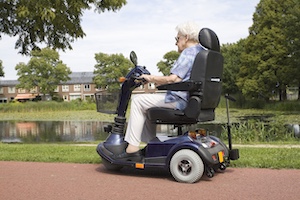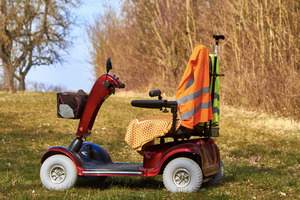Buying a mobility scooter can be life-changing for many people, giving you an entirely new level of independence to move around your neighbourhood without additional assistance.
With so much to gain, it only makes sense that you’ll want to do your research to make sure you get a mobility scooter that best suits your needs. After all, there are a wide variety of models on the market these days, and not everyone will find all of them suitable.
There are many things to factor in when buying your scooter, including:
- What class vehicle it is
- Price
- Batteries
- Storage
- Charging accessibility
Below, we’ve put together our total guide to buying a mobility scooter and our top tips for keeping yours in top condition once you have it.
Who Can Drive a Mobility Scooter?
You can drive a mobility scooter or powered wheelchair only if you have trouble walking because of an injury, medical condition or physical disability.
Other exceptions are if you are training a disabled user, demonstrating the vehicle, or taking the scooter to or from repairs.
Do I Need a Driving License to Drive a Mobility Scooter?
No, you don’t need a license to drive a mobility scooter or powered wheelchair. However, you may need to register your vehicle for use and you should note that only certain types of mobility scooter may be driven on the road.
What Types of Mobility Scooter Are There?
First things first: let’s take a look at the different types of mobility scooter you can get, and why each one is made slightly differently.
Class 2 Mobility Scooter
Class 2 mobility scooters are not suitable for use on the road, other than if there is no pavement available. However, this does mean that this type of scooter is more lightweight, and can often come in a foldable design to be easily stowed on public transport or in the boot of a car.
Types of class 2 mobility scooters include:
- Powered Wheelchairs
- Folding scooters (typically weighing around 25kg)
- Mid-weight scooters (typically around 50kg, with more power than a folding scooter)
Class 3 Mobility Scooter
Class 3 mobility scooters are suitable for use on the road, and as such, they need to meet certain criteria. You will also need to register your mobility scooter if it is a class 3 model.
This type of mobility scooter is more powerful and has a longer range than class 2 types, and will also include features such as:
- Front and rear lights and indicators
- An audible horn
- A rear view mirror
- A maximum unladen weight of 150kg
Class 3 mobility scooters have a speed limit of 8 mph, with a speed limiting device to 4 mph on pavements.
If you need your mobility scooter to travel longer distances that will involve road use, you will need to look for a class 3 mobility scooter. If, however, you only intend to use your mobility scooter for shorter trips (such as to the shops) which do not involve road use, a more lightweight class 2 mobility scooter may be more suitable for you.
Other Questions to Ask
- Where do you want to use your mobility scooter?
- If you are going to be using your scooter outdoors, is it level or rough ground? Are dropped kerbs available?
- Do you need to get your mobility scooter in a car?
- Where will you store your scooter? Can it also be charged there?
- Are you able to safely use the scooter?
- Do you need an additional warranty, insurance, and a service contract?
Training for Mobility Scooters
When you purchase your mobility scooter, the mobility scooter expert will be able to provide you with all the information and advice you need on safely driving your scooter, as well as things such as maintenance, charging, and safe storage.
You could also ask them to accompany you home to show you how to use your mobility scooter both indoors and outdoors and ensure you get the best use out of your new scooter possible.
Charging & Storing Your Scooter
You will need to make sure you have a suitable place to store your scooter overnight, preferably with a powerpoint so you can charge it at the same time. Your storage space should:
- Be indoors
- Be cool, but not too cold
- Easy to get your mobility scooter in and out of (no lifting!)
- Near a power point
The Importance of Mobility Scooter Insurance
Cover your investment with a mobility scooter insurance policy, and also protect yourself against accidental damage and third party liability.
Surewise.com have partnered with hundreds of mobility scooter shops around the UK to ensure we can provide affordable, comprehensive insurance that provides cover for:
- New and second-hand scooters
- Recovery assistant 24/7
- Puncture care
- Personal accident
- Accidental damage
- Third party liability
- Theft
- & much more
Find out more about mobility scooter insurance and find an affordable quote to cover yourself when using your mobility scooter today.
Buying Your Scooter
With so many mobility scooters available, one of the best ways of getting the right mobility scooter for you is to go into your look mobility shop and talk with one of the experts in the shop.
They’ll be able to listen to your needs and your living situation, and best advise you on the right model for you. Remember to find a reputable supplier to visit, too: you won’t just be buying your scooter as a one-off investment, but will want to be with a legitimate and professional shop when your mobility scooter needs servicing later down the line.
How To Maintain Your Mobility Scooter To Keep It In Great Condition
If you’ve just purchased a new mobility scooter, one of your first concerns should be learning how to maintain your mobility scooter to ensure it lasts as long as possible.
Mobility scooters are often a big investment, so keeping your scooter in top condition should be a priority – and thankfully, there are many small but effective things you can do to extend your scooters lifetime. Below, we’ve listed some of the key points you need to know about taking care of your scooter all year round.
Batteries
The majority of mobility scooters have two 12v batteries that can be recharged. Typically, the battery on your mobility scooter should last for up to 2 or 3 years, but you do need to maintain it in order to extend its lifetime.
A few key points to look after your scooter’s battery include:
- Always charge overnight to keep the battery topped up (between 8 – 10 hours)
- Charge your scooter after use if it has less than 80% charge
- If you do not use your scooter frequently, be sure to charge it once a month (perhaps twice in cold weather) to prevent the battery from going flat
Battery requirements may vary depending on your individual scooter, so it is always best to double check your manual to ensure you are maintaining your battery according to its requirements!
Storage
When not in use, your scooter should ideally be stored in a clean, dry space with a mains socket close by so you can charge it when you need to. If you don’t have space inside your home, a shed or garage can make the ideal secure space to store your scooter.
Try to avoid storing your scooter outdoors and allowing it to sit outside if it is raining, as this can cause your scooter to corrode over time. If you have to store it outside, be sure to invest in a waterproof cover to protect your scooter.
Maintenance & Cleaning
To keep your scooter in top condition, it is a good idea to clean it with a soft, damp cloth after use. This will ensure your scooter stays free of dust and debris which could mark your scooter and cause corrosion.
When cleaning your scooter, be sure to pay attention to the area around the battery terminals, and the underside of your scooter – and remember that a heavy-duty clean every once in a while can do wonders for your scooter!
Tyres
Some mobility scooters have pneumatic tyres, in which case their air pressure will need checking regularly.
Maintaining the tyre pressure in your tyres will ensure you have a far less bumpy ride on your scooter, and will also help your tyres last longer before they need replacing.
Servicing
Finally, having a professional to inspect your scooter for any faults once a year is an essential step in maintaining your scooter, as there are some issues that you may not simply know to look out for.
Take your scooter to your local repair shop for annual servicing to have your brakes and tyres thoroughly checked, wiring inspected, and more. This not only ensures your scooter is in top condition for as long as possible, but will also keep you safe from your scooter failing when you are driving it.
Cover yourself and your mobility scooter against breakdown, theft, accidental damage and more with a mobility scooter insurance policy from Surewise. Starting from just £4.40 per month, we pride ourselves on offering high-quality insurance, and great value prices.




